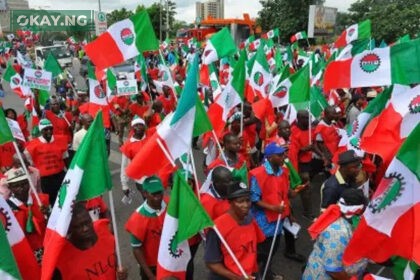In a notable shift in its borrowing strategy, the Federal Government of Nigeria (FG) has announced plans to raise between N900 billion and N1.2 trillion from the domestic bond market in the second quarter of 2025. This figure represents a significant decrease from the N1.8 trillion targeted in the preceding first quarter, as revealed in the newly released FGN Bond Issuance Calendar for Q2 2025 by the Debt Management Office (DMO).
This recalibrated borrowing appetite comes against a backdrop of considerable fiscal headwinds facing the nation. Weak oil revenues, persistent high inflation, and a substantial N13.08 trillion budget deficit – equivalent to 3.87 per cent of the country’s Gross Domestic Product – are exerting considerable pressure on government finances.
According to the DMO’s schedule, three bond auctions are slated for April 28, May 26, and June 23. Each auction will feature the offering of two distinct bonds, with the government aiming to raise between N300 billion and N400 billion at each session through a combination of reopening existing bonds and introducing new issuances.
This approach contrasts with the first quarter’s strategy, which involved three bonds per auction with a monthly target range of N450 billion to N600 billion. The bonds offered in Q1 included the 19.30 per cent FGN APR 2029, the 18.50 per cent FGN FEB 2031, and a newly introduced 10-year FGN JAN 2035 bond, each offered within the N150 billion to N200 billion range.
For the second quarter, the DMO has streamlined its auction lineup to two bonds per month. April and May will see the reopening of the 19.30 per cent FGN APR 2029 and the 19.89 per cent FGN MAY 2033 bonds. June will witness the debut of two new bonds: the FGN JAN 2030 and the FGN JAN 2032, with original tenors of five and seven years, respectively.
Analyzing the specifics, by April, the APR 2029 bond will have a remaining tenor of four years, while the MAY 2033 bond will have six years and one month until maturity. These tenors will further shorten by May to three years and eleven months, and six years, respectively. Importantly, both bonds will retain their original coupon rates of 19.30 per cent and 19.89 per cent.
The DMO has also provided detailed information regarding its upcoming April auction. The Federal Government intends to raise N350 billion through the reopening of the APR 2029 and MAY 2033 bonds. Specifically, N200 billion will be offered in the APR 2029 bond, and N150 billion in the MAY 2033 bond. The auction is scheduled for Monday, April 28, with settlement slated for Wednesday, April 30.
Each unit of the bond is priced at N1,000, with a minimum subscription of N50,001,000 and subsequent bids in multiples of N1,000. While the coupon rates are fixed, successful bidders will pay a price determined by the yield-to-maturity and accrued interest up to the settlement date.
These FGN bonds offer investors semi-annual interest payments, with the principal repaid in full upon maturity. They also possess several attractive features, including qualification as securities under the Trustee Investment Act, tax exemption under the Company Income Tax Act and Personal Income Tax Act, and recognition as liquid assets for banks’ liquidity ratio calculations. Furthermore, they are listed on both the Nigerian Exchange and the FMDQ OTC Securities Exchange, enhancing their tradability.
Industry analysts suggest that the DMO’s more cautious approach in the second quarter may be a strategic response to sustained demand from institutional investors and the evolving dynamics of monetary policy. With the nation’s inflation rate standing at a significant 24.23 per cent in March and the Monetary Policy Rate (MPR) aggressively set at 27.5 per cent by the Central Bank of Nigeria (CBN), high-yielding government bonds continue to present a compelling investment proposition.
The reduced issuance target could also indicate a deliberate effort by the government to manage its borrowing costs in an environment characterized by tighter liquidity within the financial system and broader fiscal pressures. By moderating the supply of new bonds, the DMO may be aiming to prevent further upward pressure on yields, thereby mitigating the overall cost of borrowing for the government.










